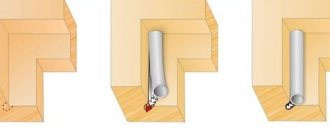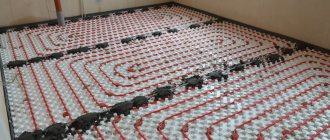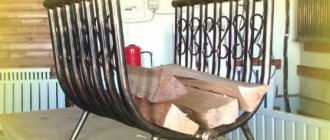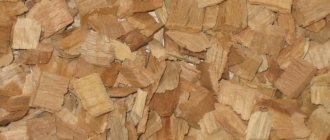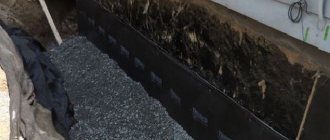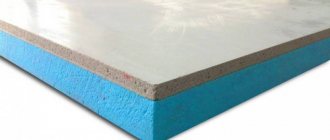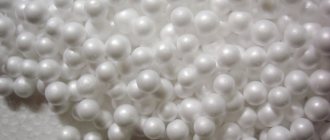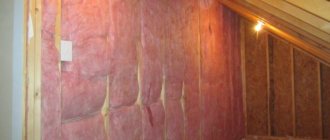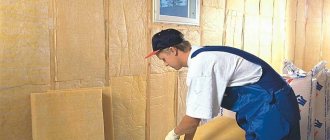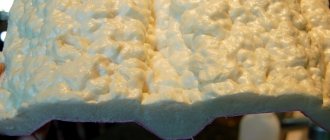Foam chips are polymerized balls, the diameter of which varies between 3-7 millimeters. Crushed material (this is also called this material) is obtained by crushing foam plastic waste. This is economically beneficial, and the original properties of the foam remain the same. So, today we will find out what foam chips can be used for.
Foam chips - how to use?
The material is widely used in construction and repair, as well as in the industrial sector, mainly as a heat insulator or building material. Using foam chips is an extremely beneficial method of insulating foundations, walls and floors. Let's find out what the basic principles of using crushed wood are.
- Filler. The material is poured into cavities and holes in ceilings or brickwork, and is also used to level surfaces. Excellent technical properties allow foam granules to take on any shape, so the so-called cold bridges are completely eliminated. Moreover, due to its strength, the material does not deform, which cannot be said, for example, about mineral wool or expanded clay. By the way, you can find more about polystyrene foam crumbs on the website https://dnplast.dp.ua/catalog/granula_i_kroshka_penopolistirola/. But let's get back to use.
- Floor screed. Here we are talking about expanded polystyrene concrete, the preparation process of which consists of several stages. So, first, water is mixed with cement until a homogeneous mass is obtained, then, while continuing to mix, crushed powder is added (the proportions depend on the desired result). The more granules, the better the thermal insulation properties will be, but the lower the density will be. This should not be forgotten.
To obtain a floor screed solution, we recommend adhering to the following proportions:
- 4 or 5 parts crushed;
- 1 part water;
- 2 parts sand;
- 1 part cement.
Note! When working with crumbs, you should also not forget about safety precautions: you need to work away from open flames, without using chemical solutions.
Production of foam chips - Termostroy
Application of foam chips
Expanded polystyrene is one of the most common polymers with a wide range of uses. Also, expanded polystyrene is more often called polystyrene foam. This material is used in the form of slabs, sheets or complex structures. Small fractions of polystyrene foam - expanded polystyrene foam chips (foam chips) are also in great demand.
Due to its low cost, availability and good consumer and energy-saving qualities, the material has found many areas of application.
Production and main types
Foam chips can be obtained in two ways:
Primary. To do this, the raw material is foamed through heat treatment using a special technology and the so-called “primary” polystyrene foam granules of a certain size are obtained.
Recycling. During the production of foam plastic boards, at the stage of cutting into sheets, foam plastic scraps remain. These trimmings are placed in a special crusher, which breaks the trimmings into a small, homogeneous fraction. This is the so-called “crushed” or “secondary”. “Crushed” has the appearance of an uneven foam ball. Moreover, most of these balls are destroyed, unlike the whole granule, which has an even geometry and its shell is not destroyed.
Main areas of application.
Foam chips are widely used in the construction industry. The main use of “crushed” is the basis for light and warm concrete. When producing polystyrene concrete, a certain amount of foam granules is gradually added to the solution and the entire mixture is placed in a concrete mixer. The resulting solution is poured onto the floor, making a warm and light screed. Using a polymer concrete screed not only significantly insulates the floor, but also saves the consumption of concrete mixture, and given the significant reduction in the total mass of the solution, the load on the foundation is reduced. There are, however, supporters of adding a whole polystyrene foam granule, “primary”, to the solution, explaining this by the fact that more water gets into the destroyed granule of the “crushed” due to the openness of the pores due to the destruction of the granule, which entails a partial loss of its heat-saving properties of the “crushed” "And that makes sense.
Also, “primary”, like “secondary”, is used in pneumatic insulation. This is a method of blowing under pressure using pneumatic transport into voids in the walls (many houses were previously built in this way with an air gap between the inner and outer walls). A whole granule of expanded polystyrene is used more often, since with this method of use the “primary” parts fit more closely together when blown in and, accordingly, insulation when using a whole granule is more effective. Also, “crushed” has a certain percentage of dirt. which also does not perform any heat-saving functions.
“Crushed” makes more sense than “primary” to fill the voids between walls at the stage of wall construction. Then the “crushed material” is mixed with cement mortar or, alternatively, with clay.
Pneumatic insulation, as well as simply filling walls with polystyrene foam at the stage of wall construction, has a great economic advantage compared to standard cladding of facades with foam boards.
Additional uses of granules
Granulated polystyrene foam is used not only in construction, but also in other industries. First of all, this is furniture production. There, the crumbs are used to fill frameless models of armchairs, sofas or poufs. In this case, only the “primary” is used.
The next industry is the direct production of foam plastic boards, as well as packaging materials, utensils and permanent formwork for monolithic construction, which uses pre-foamed primary polystyrene foam granules (some manufacturers add some of the “crushed material”).
As additional applications, foam balls are used for various decorative items (“synthetic snow,” for example), in the production of children’s toys, and even for fishing (“for long-distance casting”).
Results
So, as you can see, granulated polystyrene foam, the use of which is not limited only to the production of polymer concrete, has become widespread in other areas due to its low cost and unique properties.
Attic insulation technologies
Let's start with the fact that there are two planes in the attic, which are insulated separately from each other:
- Floor;
- Roof slopes.
Roof thermal insulation
Let's start the analysis with the second question, because it should be started first of all, how to insulate the attic ceiling of a private residential house.
Let’s immediately make a reservation that we will not discuss the technology of applying polyurethane foam here.
- First of all, it's expensive.
- Secondly, it is difficult, so you cannot cope with this process on your own. This requires special equipment and prepared material, which is manufactured only in the factory.
We insulate the floor
All other materials for independent use are possible. So, let's insulate the roof. The ideal option is if this process begins during its construction. The thing is that it is necessary to lay a roll of waterproofing material (usually roofing felt) under the roofing material.
Roofing felt is stuffed on top of the rafter system, and the sheathing is stuffed on top of it and the roofing material is laid. Then the insulation process is transferred inside the attic floors. Here, insulation must be laid in the areas between the rafters. Therefore, in this case, only slab analogues are used.
Attention! Insulating the attic of a private house, or more precisely, its roof, is done with one caveat. The insulation should fit tightly between the rafters, leaving no gaps or cracks. This is a guarantee that cold bridges will not form at the joints.
The heat insulator is laid, now a vapor barrier material is stretched on top, which is attached using metal brackets to the rafter legs.
If you use modern materials, for example, expanded polystyrene in foil (penoplex or penofol), then the use of a vapor barrier is reduced to zero.
Floor insulation
Let's move on to the question of how to insulate the attic floor in a private house.
Everything is much simpler and more convenient here.
- Firstly, you can use any of the above materials to insulate the floor.
- Secondly, it takes less time.
Insulated attic
For example, expanded clay or foam chips. To do this, a sheathing of wooden beams, slats or boards is usually placed on the floor, between which insulation is poured. Boards are usually placed on top directly along the sheathing.
The same thing can be done with rolled or slab materials. The sheathing is also made here, between the elements of which insulation is laid. Flooring material is packed on top.
Properties and purpose
In construction, polystyrene concrete is used in the form of fresh mortar or blocks, and the scope of application depends on its special properties.
Material characteristics
This material can be placed on a par with foam and aerated concrete. It also has low density and light weight. And it differs from ordinary concrete based on sand or crushed stone in its high heat-shielding properties.
The composition of the mixture gives these features to the material called polystyrene concrete. More precisely, the type of filler. After all, polystyrene foam is considered one of the lightest and most effective insulation materials.
I will list its other properties to make it clear why it is so actively used in various areas of construction. This:
- High tensile and compressive strength, which allows the construction of load-bearing walls from it;
- Non-flammability;
- Low water absorption, which allows maintaining low thermal conductivity even when wet;
- Frost resistance reaching up to 100 cycles;
- Excellent adhesion (adhesion) with other building materials;
- Higher elasticity than cellular concrete;
- Ease of processing and finishing;
- Resistance to atmospheric and biological influences such as precipitation, sunlight, fungi and mold.
Application area
Above, information was given about the density that polystyrene concrete can have: technology + compositions + recipe. This parameter mainly determines the scope of application of the material.
Depending on the purpose, the solution is used in different ways:
- For floor screeding or installation and insulation of floors - in liquid form;
- To build walls, blocks are made from mortar by pouring it into molds. They can be any size;
- You can also build a monolithic house from polystyrene concrete by pouring the mortar into the formwork with reinforcement installed in it.
Unlike cement-sand mixtures, concrete with light filler puts less load on foundations and other structural elements of buildings. And when installing screeds and ceilings, it does not require the use of vapor-waterproofing materials, which are indispensable when insulating the floor with mineral wool.
All this reduces the cost of construction, and the houses are warm and durable.
Materials for attic insulation
Let's start with the fact that the modern building materials market is now ready to offer a huge range of thermal insulators, which differ from each other in their raw materials, but are almost similar in thermal insulation properties.
It is necessary to make one very important note, which will relate to the classification of insulation materials.
Let's divide them into two classes:
- Traditional.
- Modern.
Traditional insulation
This group includes those thermal insulation materials that have come into our modern times since the last century.
These include:
- Mineral wool;
- Glass wool;
- Expanded clay;
- Styrofoam;
- Foam chips;
- And so on.
How to insulate the attic of a private house - mineral wool
That is, these are the materials that have been familiar to us for a long time. They have a great many advantages, of which one stands out - low price. And those developers who are limited on budget usually choose them.
Modern insulation materials
But we need to talk about this class more carefully. The production of thermal insulation materials is based on the use of completely new technologies using traditional types of raw materials.
Plus the introduction of additional components into the raw material, which increase the physical, technical and operational characteristics of the final product.
Let's look at two new generation insulation materials that are often used in construction today.
How to insulate the attic of a private house - applying polyurethane foam
- The first is polyurethane foam (gas-filled plastics) . The technology of its application is unique - it is a spraying method (see in more detail the article Insulation of polyurethane foam - the latest thermal insulation material among its analogues). That is, it is not a roll or slab material. It is thrown onto any surface under slight pressure, and due to its high adhesion, polyurethane foam is attached to the plane without any fasteners (special equipment is required here).
Attention! This insulation creates a seamless coating on surfaces, which is a big plus. In addition, when hardened, polyurethane foam becomes as strong as cement. So this coating gives strength and rigidity to the entire structure.
- The second is polystyrene foam . Many ordinary people believe that this is thick foam. They are mistaken, although the external similarity is great. This insulation has higher qualities, for example, high density, strength and high tensile and compressive strength.
These are the types of thermal insulation materials that manufacturers offer today. The question of which is better must be approached from the perspective of the money you are going to invest in your own home.
